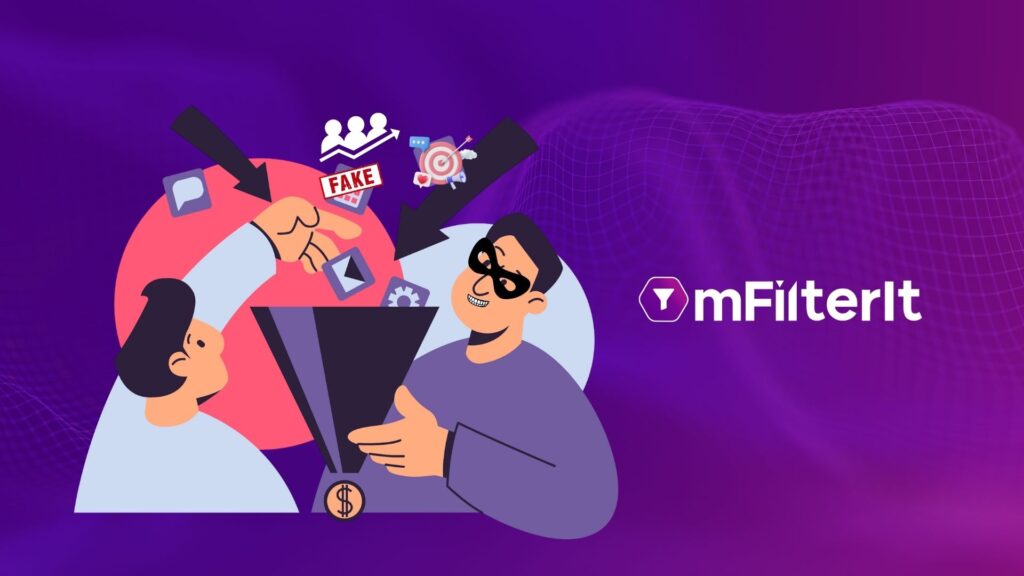Paying affiliates based on performance, right? But are you paying for the performance that drove genuine results?
There’s a common misconception that affiliate campaigns are low-risk because they’re performance-based. Well, not quite.
Everything has two sides and so do affiliate campaigns.
On one side, affiliate campaigns promise scale, reach, and revenue. However, the other one is a darker side of unseen threats due to various types of affiliate fraud techniques, brand abuse, attribution hijacking, misuse of coupon codes, etc.
Many campaigns may show rising ROAS, but what’s often missing is how that performance was achieved. Was that traffic truly incremental, or did an affiliate use deceptive techniques just to win last-click attribution?
According to an mFilterIt first-party analysis of 343 campaigns run in 2024, 43% of affiliate fraud was detected in India, 35%, 34%, and 33% in MENA, US, and Europe, respectively.
In 2025, affiliate marketing success isn’t just about conversions – it’s about validating authenticity, protecting your brand, and rewarding partners who play fair.
In this article, we will explore the hidden threats undermining affiliate marketing and understand how affiliate monitoring & brand-safe performance can actually amplify campaign impact when you monitor it right.
The Hidden Threats in Affiliate Campaigns
While affiliate marketing remains one of the most scalable performance channels, marketers need to recognize the warning signs, to protect both brand equity, budget, and stay ahead.

1. Unauthorized Brand Bidding on Keywords (Search Hijacking)
One of the most common forms of affiliate fraud and manipulation is brand bidding. Using this tactic, affiliates bid on your branded search terms, hijacking users who are already looking for your product or website. Instead of converting through organic results or direct visits, users are rerouted through paid ads, earning the affiliate a commission they didn’t truly earn.
Impact: This not only inflates your paid search costs but also creates internal competition between your media team and your affiliate partners. And you end up paying twice for traffic that was already yours.
2. Misleading Creatives and Unauthorized Branding
Affiliates and influencers often deploy creatives that fall outside your official brand guidelines and misrepresent your brand using outdated logos, fake discount banners, or fabricated promotional messaging. These visuals are designed to grab attention, inflate clicks, creating confusion or mistrust among customers.
Impact: Misrepresentation damages brand credibility. These unauthorized creatives often appear on platforms or websites where your team has limited visibility, making enforcement difficult unless you’re actively monitoring across channels.
3. Typo-Squatting and Duplicate Listings
Fraudsters often set up websites or marketplace listings using typo-ed brand names or unauthorized duplicates of your product pages. They optimize these pages to rank high in organic results or promote them through ads, redirecting users through affiliate links.
Impact: You lose official visibility, and customers may unknowingly buy from unverified resellers or outdated sources, damaging your brand integrity.
4. Promo Code & Cashback Abuse
Affiliates and influencers often misuse coupon codes to manipulate attribution. When these codes are placed on public coupon websites, they begin ranking on search engines attracting organic traffic that would’ve come directly to your site. In some cases, influencers even post their codes in comment sections of social media posts, hijacking conversions without truly driving demand.
Impact: Skewed performance reporting, reduced margins, reputational damage, and customers conditioned to always expect discounts, even when you don’t offer them
5. Hidden Redirects and Cloaking Techniques
Some affiliates use browser extensions, in-app overlays, or cloaked links to secretly redirect users through affiliate URLs, without ever making it visible to your team. What the user experiences and what your tracking tools record may be two very different things.
Impact: Lost visibility, deceptive tracking, and lost control over customer journey insights. These invisible tactics not only violate user trust but also pollute your performance data, making optimization difficult.
Advanced Affiliate Fraud Tactics in 2025 Every Marketer Should Know About
Affiliate fraud today is no longer about random bad actors exploiting obvious loopholes. It has evolved into a coordinated, intelligent system often powered by automation, artificial intelligence, and sophisticated evasion techniques used by affiliates to earn commissions.

Affiliate Collusion – Two or more affiliates working together
Fraudsters now operate in groups or affiliate rings, where multiple affiliates coordinate their efforts to game attribution models. They rotate tracking links, share device IDs and IP addresses, and even simulate varied browser behaviors to avoid detection.
Because each affiliate in the ring appears to act independently, the fraud doesn’t trigger obvious alerts. Without deep behavioral analysis or identity mapping, affiliate collusion generates invalid traffic that siphons off the marketing budget and corrupts data, misleading overall performance.
Affiliate Cloaking Fraud
Affiliate cloaking involves showing a compliant, brand-approved landing page to your audit tools or standard fraud detection systems while redirecting real users to unauthorized destinations/landing pages.
To the brand, everything looks clean: your code sees the right creatives, landing pages, and parameters. But the end user might see fake offers, misleading discounts, or even be redirected to counterfeit products pages.
This gives you a false sense of compliance while exposing your customers to experiences you don’t control and can’t see.
Why Standard Campaign Metrics Can’t Detect Any of These
Most affiliate managers track surface metrics: click-through rates, ROAS, last-click conversions, etc.
But what if that conversion came from a hijacked keyword? What if the click came from a cloaked URL? What if the influencer was running fake creatives on irrelevant inventory.
Affiliate fraud thrives in the gray zones between attribution layers, browser behaviors, and third-party channels. The truth is you can’t see affiliate fraud in a dashboard; you need affiliate monitoring tools that go deeper.
If you’re not validating the “how” behind affiliate conversions, you’re only seeing half the picture.
What These Threats Cost You
Let’s break down the real impact of affiliate fraud:
- Paid commissions on traffic that would’ve converted anyway
- Loss of organic traffic due to brand keyword hijacking
- Inflated KPIs leading to poor optimization decisions
- Reputational damage that can erode long-term customer loyalty
- Missed growth opportunities and lack of strategic implementation
Affiliate fraud doesn’t just waste money; it blocks future revenue.
Setting Up Brand Protection Against Affiliate Fraud: Partner with the Right Affiliates
Here’s how marketers can take back control:
- Define clear affiliate terms, no brand keyword bidding, promo code abuse, or unauthorized creatives
- Add your brand terms as negative keywords in your own search campaigns
- Use affiliate monitoring software that provide proactive violation alerts
- Don’t rely solely on affiliate dashboards, audit creative assets and landing pages across regions
- Maintain a whitelist of trusted partners and practice continuous affiliate monitoring
- Align affiliate operations with brand, legal, and media teams to close the loop
How mFilterIt’s Affiliate Monitoring Solution Helps
At mFilterIt, we empower brands with more than just detection. We offer transparency, visibility, accountability, and scalable trust into your affiliate ecosystem. Here’s how:
AI-Powered Fraud Detection – Our AI and ML-based affiliate monitoring solution – EffCent, continuously scans traffic for anomalies on 60+ parameters, cloaked redirects, and behavior inconsistencies to stop fraud before it reaches your attribution reports.
Full-Funnel Transparency – From the traffic source to final conversion, you can get a unified view of user journeys. Know who sent the traffic, how they sent it, and where it landed.
Real-Time Monitoring of Creatives, Codes & Keywords – Track usage of misleading coupon codes, ad creatives, and brand bidding across platforms – social media, publishers, and search engines to instant alerts on violations.
Cloaking & Evasion Detection – EffCent also uncovers geo-targeted brand bidding, region-based abuse, and cloaked campaigns, so you can block deceptive traffic at the source.
Identify Top-Performing, Clean Affiliates – Go beyond fraud detection. mFilterIt helps you identify and scale partners that drive clean, compliant, high-converting traffic, so your affiliate campaigns’ budget is saved and not wasted.
Conclusion: Real Performance Starts with Real Protection
Affiliate campaigns should be a growth lever, not a liability.
But without affiliate fraud protection, performance data becomes a mirage. In 2025, clean traffic and transparency of the data is necessary.
With the right affiliate monitoring tools like EffCent by mFilterIt, you can scale your affiliate ecosystem with confidence – built on data integrity, partner trust, and real performance.
Monitor smarter. Optimize for cleaner results. Grow faster.
Ready to protect your affiliate marketing efforts and budget? Learn how mFilterIt can help.



